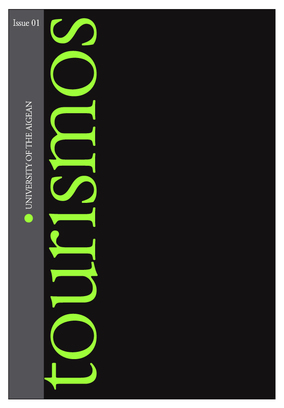A study on the competition strategies of the airline companies in Turkey
Part of : Tourismos : an international multidiciplinary journal of tourism ; Vol.7, No.1, 2012, pages 325-338
Issue:
Pages:
325-338
Section Title:
Case studies
Abstract:
This study aims to determine how the airline companies perceive the competition environment they are in, which competitive strategies they implement and to find out how and by which factors they are affected while forming these strategies. Qualitative research method was used in the study. The population of the study consists of the airline companies which have mainly local capital, the management centres of which are in Turkey and which have the licence of scheduled and non-scheduled domestic and international flights. A descriptive analysis was made for the data. The result of the study reveals that the competitive strategies implemented especially focus on obtaining the cost leadership. In addition, costs, customer satisfaction and service quality, employees, innovation and technological changes appear to be the most important elements among the factors which affect the competitive strategies.
Subject (LC):
Keywords:
Turkey, airlines, compertitive strategies
Notes:
Περιέχει πίνακες και βιβλιογραφία
References (1):
- Alamdari, F. & Fagan, S. (2005). Impact of the adherence to the original low-cost model on the profitability of low-cost airlines. Transport Reviews, Vol. 25, No.3, pp.377-392.Andrews, K.R. (1971). The Concept of Corporate Strategy. Dow Jones-Irvin, Homewood, IL.Akal, M. (2010). Economıc Implıcatıons of Internatıonal Tourısm on Turkısh Economy. Tourismos: An International Multidisciplinary Journal of Tourism, Spring, Vol. 5, No.1, pp.131-152.Anon. (2005). Low-cost founding fathers. The Economist, Vol. 374. No.8411, 27 January.Barney, J. (1991). Firm Resources and Sustained Competitive Advantage. Journal of Management, Vol. 17, No.1, pp.99-120.Coulter, M. (2005). Strategic Management in Action. New Jersey. Pearson Education International Inc. Upper Saddle River.Daniel, C. (2000). Air wars in Asia: Competitive and Collaborative Strategies and Tactics in Action. Journal of Management Development, Vol. 19, No.6, pp.473-488.Day, S.G. (1994). Strategic Marketing Planning: The Pursuit Of Competitive Advantage. United States of America. West Publishing Company.Evans, N., Campbell, D. & Stonehouse, G. (2003). Strategic Management for Travel and Tourism. Oxford, Butterworth-Heinemann,Fitzroy, P. & Hulbert, J.M. (2005). Strategic Management:Creating Value in A Turbulent World. U.K. John Wiley & Jons Inc.Franke, M. (2004). Competition between network carriers and low-cost carriers – retreat battle or breakthrough to a new level of efficiency? Journal of Air Transport Management, Vol. 10, pp.15-21.TOURISMOS: AN INTERNATIONAL MULTIDISCIPLINARY JOURNAL OF TOURISMVolume 7, Number 1, Spring-Summer 2012, pp. 325-338UDC: 338.48+640(050)337Glisson, L.M., Cunningham, W.A., Haris, J.R. & Janet, Di Lorenzo-Aiss. (1996). Airline industry strategic alliances: marketing and policy implications. International Journal of Physical Distribution & Logistics Management, Vol. 26, No.3, pp.26-34.Grant, R.M. (2005). Contemporary Strategy Analysis. UK. Backwell Publishing.Harrison, S.J. & John, H.C. (2004). Foundation in Strategic Management. United States of America, Thomson: Southwestern.Hitt, A.M., Ireland, R.D. & Hoskisson, R.E. (2005). Strategic Management: Competitiveness and Globalization (Concepts and Cases). Thomson Corporation, South-Western.Huettinger, M. (2006). Air Baltic and SAS – a case study in the European airline industry. Baltic Journal of Management. Vol. 1, No.2, pp.227-244.Ige, C.S. & Odularu, G.O. (2008). Analyzes of Impact of Tourısm on the West Africa Economy: a Panel Data Approach. Tourismos: An International Multidisciplinary Journal of Tourism, Spring Vol. 3, No.2, pp.71-90.John, C.D. (2001). Airline marketing in regulatory context. Marketing Inteligence & Planning, Vol. 19, No.2, pp.125-135.Kılınç, İ., Öncü, M.A. & Taşgit, Y.E. (2009). A Study on the Competition Strategies Implemented in the Airline Companies in Turkey, Sosyal ve Ekonomik Araştırmalar Dergisi, Vol. 7, No.17, pp.173-187.Miles, R.E. & Snow, C.C. (1978). Organizational Strategy, Structure And Process. New York, Mcgrow-Hill.Mintzberg, H. (1996). Generic business strategies. In H. Mintzberg and J. Quinn (Eds.) The Strategy Process, Prentice Hall International: Upper Saddle River/NJ.Morschetta, D., Swobodab, B. & Schramm-Klein, H. (2006). Competitive strategies in retailing—an investigation of the applicability of Porter’s framework for food retailers. Journal of Retailing and Consumer Services, Vol.13, pp.275-287.Nanthakumar, L., Ibrahim, Y. & Harun, M. (2008). Tourism Development Policy, Strategic Alliances and Impact of Consumer Price Index on Tourist Arrivals: the Case of Malaysia. Tourismos: An International Multidisciplinary Journal of Tourism, Spring Vol. 3, No.1, pp.83-98.Porter, M.E. (1980). Competitive Strategy. New York, The Free Press.Porter, M.E. (1985). Competitive advantage: creating and sustaining superior performance. New York, The Free Press.Izzet Kilinc, Mehmet Akif Oncu & Yunus Emre Tasgit338Prahalad, C.K. & Hamel, G. (1990). The Core Competence of Corporations. Harvard Business Review, May-June, Vol. 68, No.3, pp.79-91.Taşgit, Y.E. (2008). Havayolu Yolcu Taşıma Şirketlerinde Uygulanan Rekabet Stratejileri: Türk Şirketlerine Yönelik Nitel Bir Araştırma. Yayınlanmamış Yüksek Lisans Tezi, Düzce, Türkiye: Düzce Üniversitesi.




